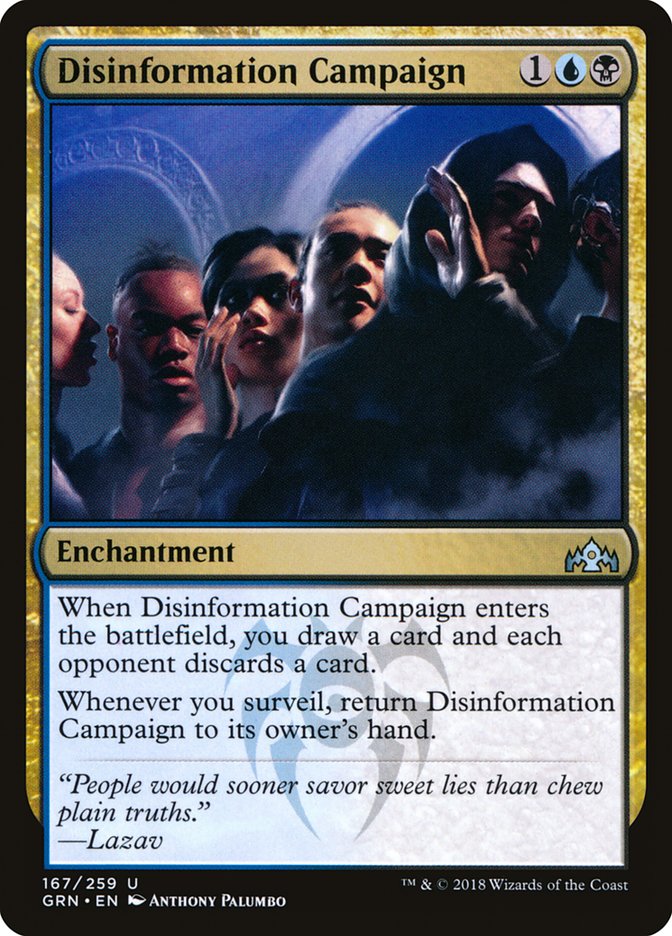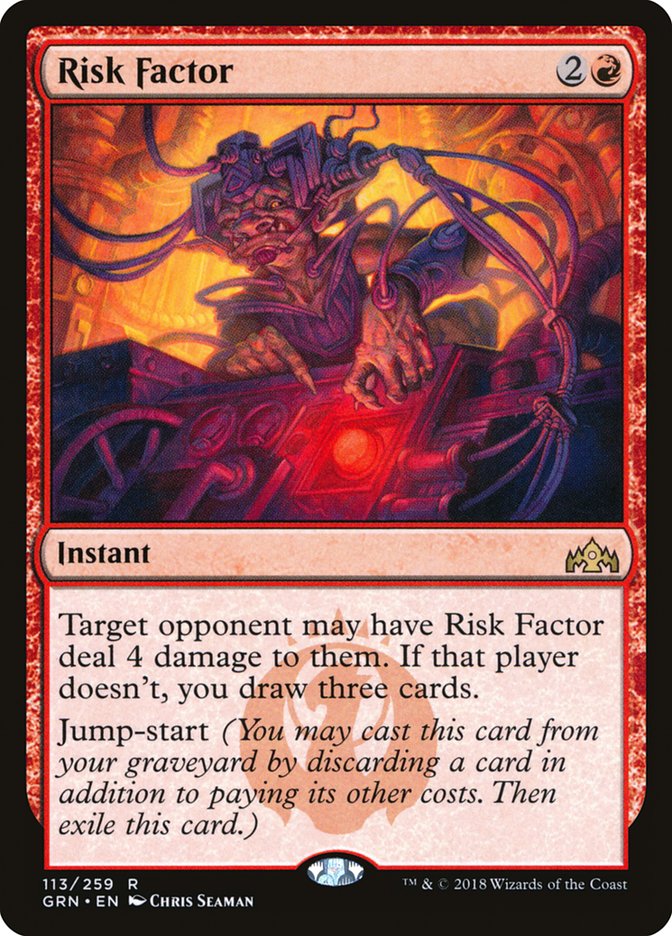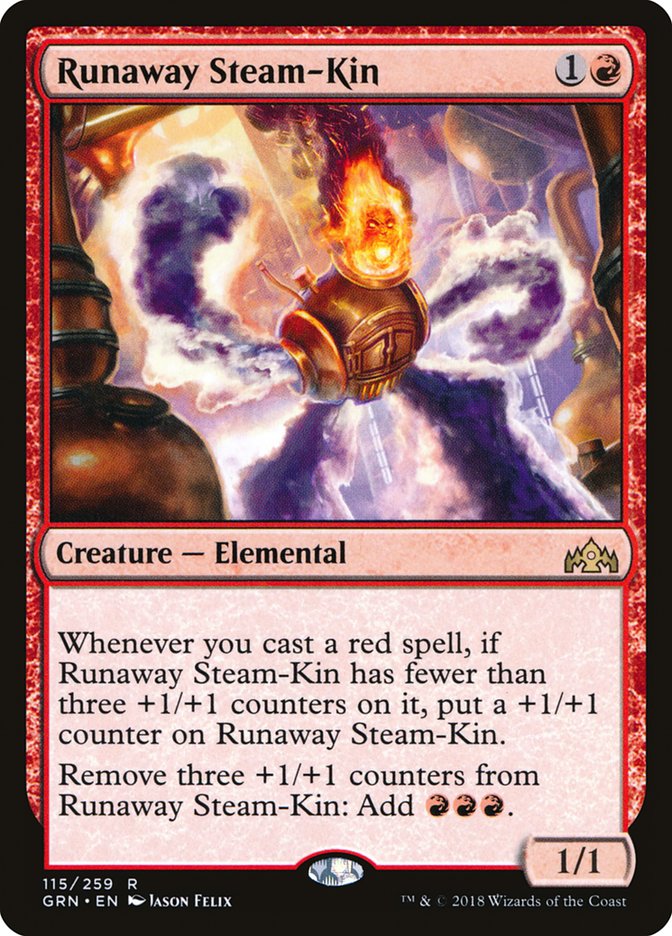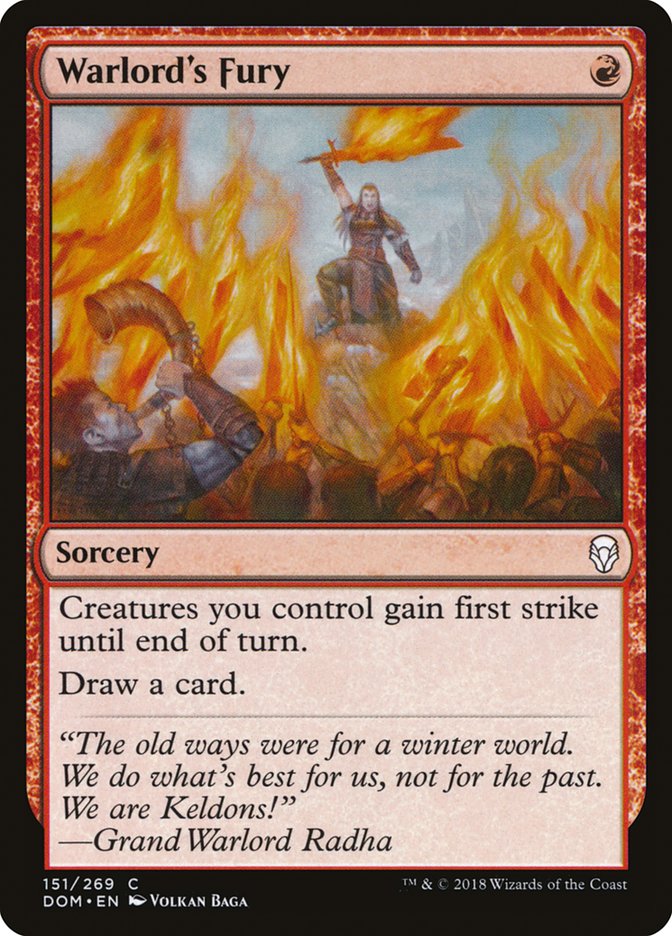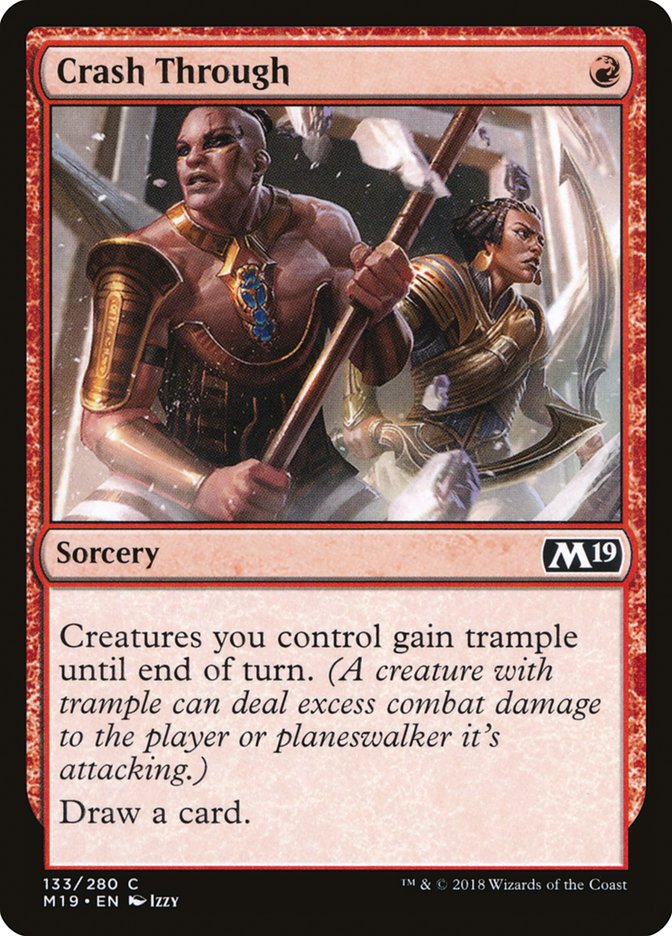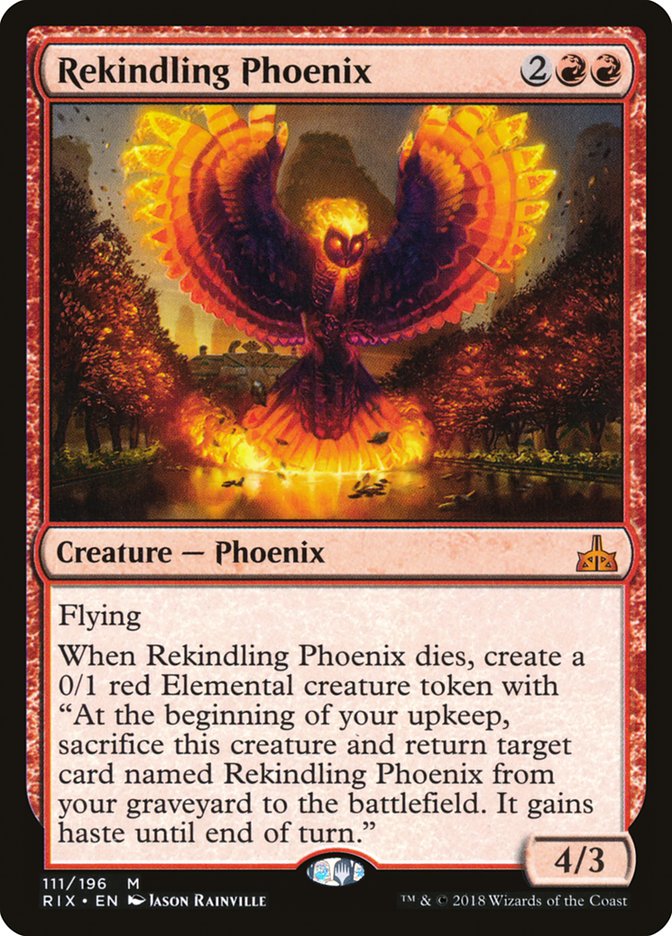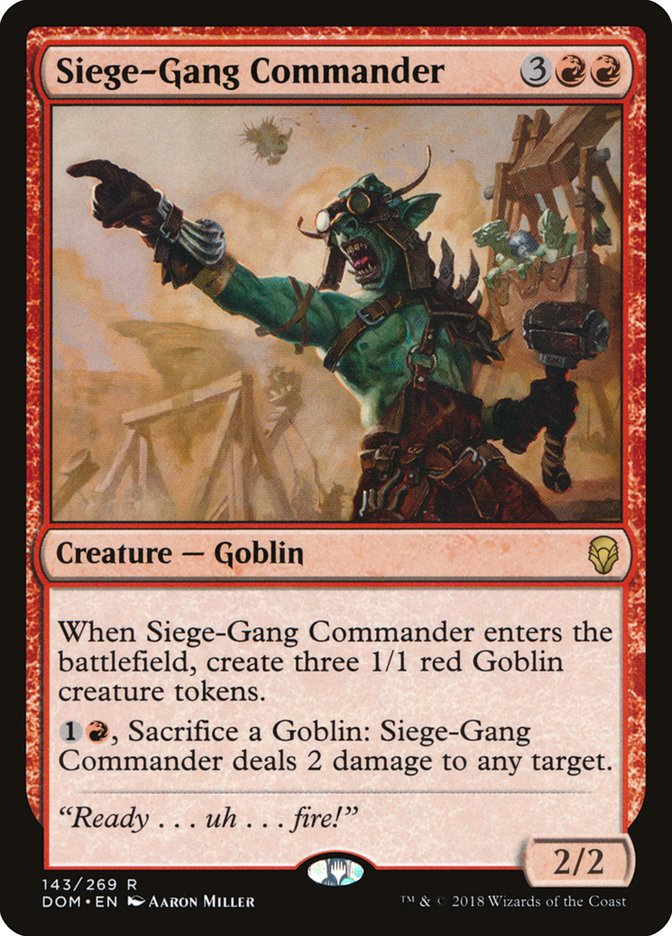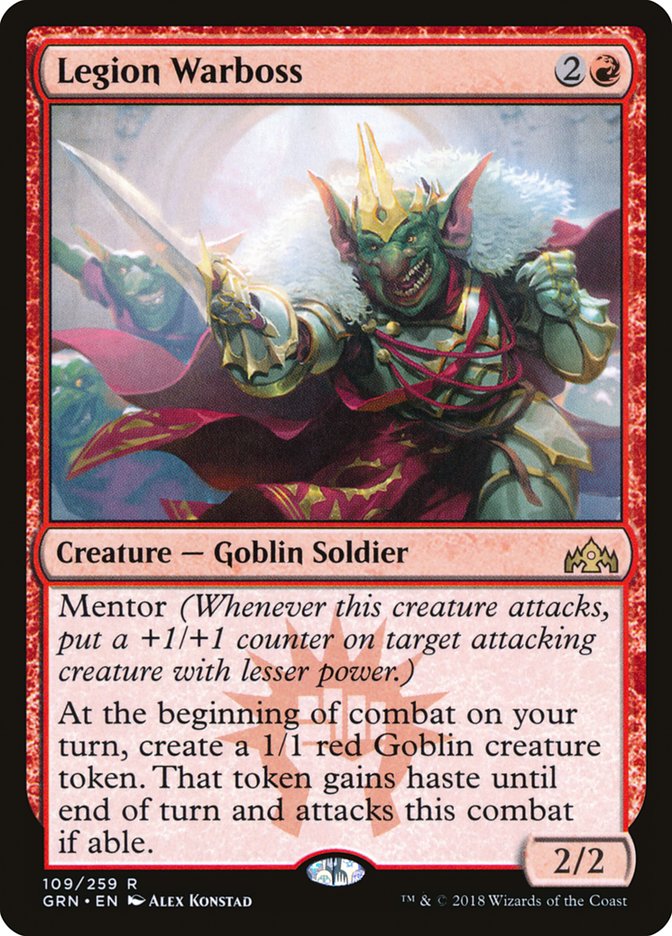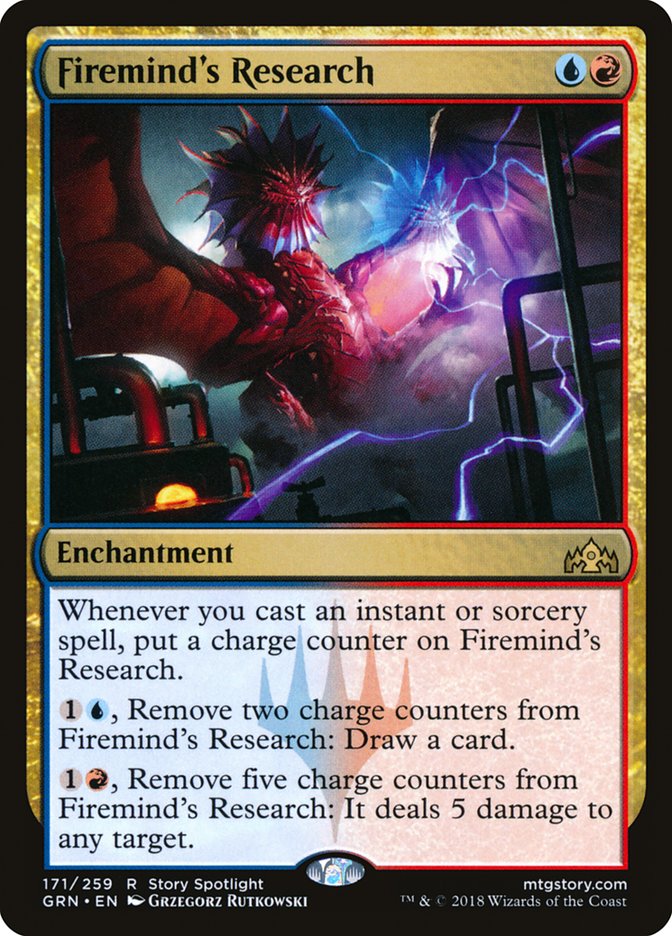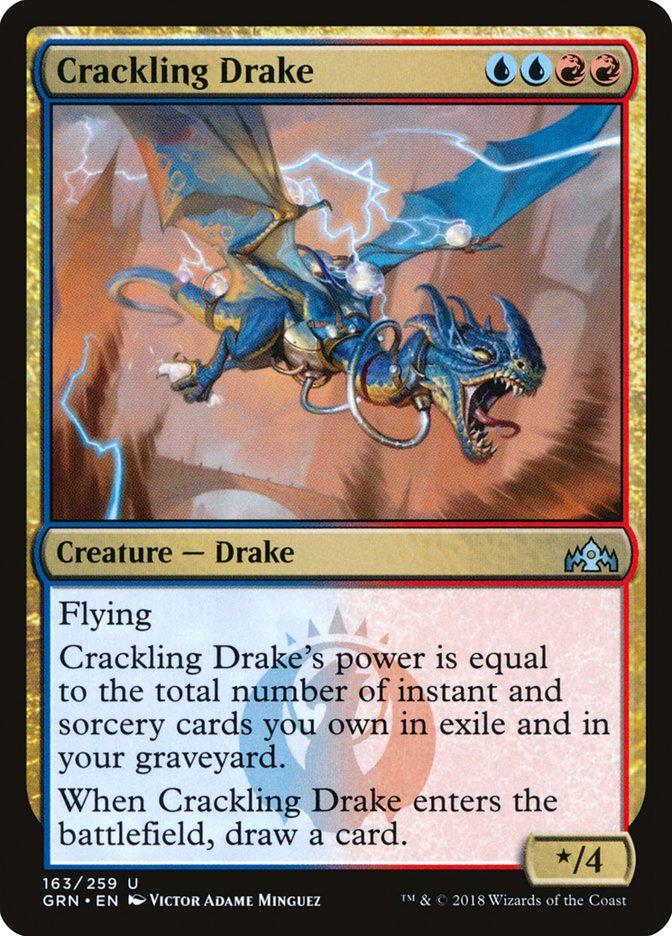In today’s article, we’re going to be discussing a few of the cards that
have really caught my attention in testing Guilds of Ravnica
Standard. I’ve noticed a few patterns, as well as found a few sleepers,
that I hope will help you in building your initial decks for the first week
of the new Standard format. Along with a few cool decklists, I’ll be
showcasing the cards from Guilds of Ravnica that I think have the
most hidden potential, as well as putting an emphasis on some of the more
underrated cards that could be the key(s) to helping some of your bad
matchups, or completely changing how your deck interacts with certain
opposing cards.
If you follow me on Twitter or Twitch, you’ll know that I’ve had a
thing for this card for a few days now. After getting demolished by the
card on Sunday night, it’s all I’ve been thinking about. At first, when my
opponent cast the card I laughed. Really? Maindeck? I had a few copies in
the sideboard of my Turbo Surveil deck
last week
, but is this card actually all that good?
Creatures (5)
Lands (26)
Spells (29)
- 3 Dead Weight
- 4 Vraska's Contempt
- 1 Arguel's Blood Fast
- 2 Moment of Craving
- 2 Cast Down
- 4 Thought Erasure
- 4 Sinister Sabotage
- 3 Ritual of Soot
- 4 Disinformation Campaign
- 2 Discovery
Sideboard

Well, a few turns later, with an empty hand versus an opposing full grip
and Doom Whisperer, I can safely say that Disinformation Campaign is the
real deal. But let me be clear, cards like Disinformation Campaign (and a
few I’ll talk about later in the article) aren’t going to be good in every
single game or every single match. You need time to develop strategies that
revolve around cards like Disinformation Campaign. And if I’ve learned
anything from playing this Standard format so far, it is that you don’t
always have time to get your engine running.
And that’s exactly what Disinformation Campaign is: an engine. And the
thing that keeps sticking out to me in this format is that nearly every
deck has some sort of card that just gets better and better as the game
goes longer. Azorius builds have Teferi, Hero of Dominaria and Search for
Azcanta. Izzet decks have a few to choose from, but we’ll get to that a bit
later.
Let me be clear, this deck has some flaws. You can’t beat a Nullhide Ferox
to save your life and Vine Mare is virtually unbeatable. My suggestion is
to ignore that matchup, hope you dodge it, and use your time and energy in
more exploitable matchups. That outlook isn’t one a lot of people can
realistically swallow, but in some cases your deck just doesn’t function
against certain cards. You need to chalk it up and move on.
But the engine theme behind cards like Disinformation Campaign et al isn’t
just for blue-based decks. Red decks are trying out Experimental Frenzy,
but many of them are also reliant on The Flame of Keld to give them much
needed bursts of cards and damage. And some of those that are super low to
the ground have also been looking at another card that has been giving me
nightmares.
Risk Factor has been completely bananas both for me and against me. My
opponents playing red decks with low curves have been hitting me repeated
with this on the top end. And if my deck doesn’t have a way to close the
game quickly, Risk Factor becomes a draw three for them, which still
eventually kills me in the long run. Thanks to those decks playing so much
burn (Shock, Lightning Strike, Wizard’s Lightning) as well as creatures
that do direct damage (Fanatical Firebrand, Viashino Pyromancer), I keep
finding myself on the losing end of a Risk Factor.
Normally, in the past, cards with a punisher mechanic haven’t been great in
Standard, but they always seem to be a casual-player favorite. When Risk
Factor was first previewed, I thought exactly the same thing as most
competitive player – why would I play something that gives my opponent the
choice? Punisher cards are often poor because the opponent will choose
whatever option is best for them in a given situation, ultimately leaving
the caster of said punisher spell with the opposite effect of what they
wanted. But with Risk Factor, you get to brute force it. The more of these
you cast, the harder it is for your opponent to justify giving you either
side, because both halves will ultimately kill them.
And that’s the reason why Risk Factor specifically is a great card: both
sides are effectively the same. Sure, if you get your entire early pressure
stifled, your opponent can afford to take eight damage to the face over the
course of two turns. But what about the second Risk Factor? Can they afford
to take sixteen? And if they start giving you three cards, those cards will
effectively do the four damage that Risk Factor threatened in the first
place. It just takes a little more time.
Inevitability is what Risk Factor gives these cheap red decks and that’s a
gift that previous punisher cards didn’t have. You cast it once, your
opponent chooses the bad option, and you continue playing Magic. Now, you
get to do it again at the low cost of discarding an extra land or random
creature that won’t impact the battlefield.
This one should be no secret by now, as a good number of my fellow authors
have penned quite a few words about this card and I expect even more
content about Runaway Steam-Kin before we actually make it to the weekend.
Brad Nelson, in particular, has already had quite a bit of success with
this little engine that could on Magic Online, and I’m inclined to agree
with him that it’s one of the best cards in the set.
encapsulates what can only be described as a powerful Magic
card.
It’s cheap, gets bigger as the game progresses, and gives you an egregious
amount of mana. On top of that, Runaway Steam-Kin encourages your
low-to-the-ground red decks to incorporate mana-sinks: cards that are
efficient on their own but allow you to generate an advantage when you can
generate a lot of mana later in the game. How you build your deck around
Runaway Steam-Kin is the more interesting aspect of the card.
Do we play a bunch of one-mana spells to make it better?
I find going this route will lead to some wonky deckbuilding that will
ultimately result in flooding out or possibly just drawing too much air in
the wrong situation.
Do we go more traditional red and play big hitters?
It’s no secret that Rekindling Phoenix is a great Magic card. It’s been in
Standard for a while now and has been in most red-based decks in some form
or fashion. If you’re low to the ground, then usually you sideboard into a
slightly bigger deck featuring the hard-to-kill Rekindling Phoenix. If
you’re more midrange with a bunch of removal, Rekindling Phoenix is a fine
finisher that’s pretty tough to deal with. And with the rotation of The
Scarab God and Hazoret the Fervent, the expectation that we need our
removal to exile the opposing threat has diminished. Instead of focusing
around the inefficient Vraska’s Contempt, I’ve seen a lot of decks looking
more toward cheap removal or sweepers to interact with early threats. Sure,
a lot of decks will still want Vraska’s Contempt to deal with
planeswalkers, but it will ultimately be less ubiquitous.
As for Siege-Gang Commander, it has been criminally underplayed since it
was reprinted, but only because Glorybringer was just a better tempo-play. Combined with the fact that Goblin Chainwhirler exists,
Siege-Gang Commander just doesn’t have the same punch that it used to. But
with Runaway Steam-Kin giving you a way to play it more consistently, as
well as the threat of using the sacrifice ability on the same turn, I think
you have a potential winning combination for a more midrange version of a
red deck. If you’re a fan of Runaway Steam-Kin, I’d look out for Brad
Nelson’s article addressing all these points and more.
It’s no secret that Legion Warboss, like Goblin Rabblemaster before it, is
a disgusting Magic card that can singlehandedly win games. When backed with
some removal to clear out blockers, Legion Warboss is an efficient threat
for a very small mana investment. But the way you make cards like Legion
Warboss into real powerhouses is forcing your opponent’s hand on the turn
prior. Cards like Runaway Steam-Kin, or an abundance of cheap creatures
cast on the first few turns, usually pave the way to resolve Legion Warboss
while your opponent is tapped out. And if I’ve learned anything from Goblin
Rabblemaster, it’s that the token it leaves behind can help create a
snowball effect. Every point of chip damage dealt by that token pushes you
closer and closer to closing the game.
Here are a few red decks revolving around Runaway Steam-Kin to give you an
idea of how they should be built. You basically have three options:
engine/combo, small aggro with mana sinks, or medium+ aggro with more
expensive spells. We’re going to focus on the two more aggressive
approaches as they’re a bit simpler in their design.
Creatures (20)
- 4 Fanatical Firebrand
- 4 Ghitu Lavarunner
- 4 Goblin Chainwhirler
- 4 Viashino Pyromancer
- 4 Runaway Steam-Kin
Lands (22)
- 22 Mountain
Spells (18)
Sideboard

And here’s a bigger red deck featuring Runaway Steam-Kin, utilizing the
mana ability to cast bigger spells like Siege-Gang Commander and even
kicked Fight with Fire!
Creatures (24)
- 3 Siege-Gang Commander
- 4 Rekindling Phoenix
- 4 Goblin Chainwhirler
- 1 Dismissive Pyromancer
- 4 Legion Warboss
- 4 Runaway Steam-Kin
- 4 Goblin Cratermaker
Lands (24)
Spells (12)
Sideboard

Let’s change direction a bit.
Remember our earlier discussion of Disinformation Campaign and engine
cards? While Firemind’s Research is a card I’ve already dedicated an entire
article to, it has felt so much better than I ever thought possible. Let’s
take a look.
Creatures (16)
Lands (22)
Spells (22)
- 4 Shock
- 2 Syncopate
- 4 Lightning Strike
- 2 Tormenting Voice
- 4 Chart a Course
- 2 Fight with Fire
- 4 Chemister's Insight
Sideboard

Like Disinformation Campaign, I think Firemind’s Research is a great
engine, but it’s just a little too slow to keep up with the current
aggressive format. But what I want to emphasize is that, above all else,
Firemind’s Research is an unbelievable card against any deck that gives you
time. Control, midrange, even certain Golgari graveyard decks all give you
enough time to get this engine going, and once it starts it feels so good
that it’s hard to actually put into words.
I’ve drawn a ton of cards. I’ve used it to kill large creatures. I’ve used
it to blow up planeswalkers. And, more often than not, I use it to finish
off the opponent in a blaze of glory. One thing it took me a while to
realize is that I don’t always need to be pushing toward the five-damage
effect. When you start to run low on gas, just pump the pedal and draw a
card or two. At the very least, you’ll find something to cast to put those
counters back, which in turn lets you draw more cards until you find enough
raw resources to close the game.
But aside from Firemind’s Research, a few other cards in this deck have
given me some food for thought. In the middle of writing this article, I
think I struck gold.
There’s synergy between many of the cards in this deck, but my favorite is
how powerful Chemister’s Insight feels when combined with Goblin
Electromancer. In fact, Goblin Electromancer has been the most impressive
card in basically every Izzet deck I’ve tried so far. For a card that saw
virtually no Standard play the first time around, it’s pretty surprising
that it’s doing so much solid work. And if my opponent doesn’t kill Goblin
Electromancer, I’m a very happy camper. My goal is to punish them as best I
can for spending the time to interact with Goblin Electromancer by
following it up with an extremely powerful threat. Legion Warboss is that
threat.
Crackling Drake has also been impressive for several reasons. Enigma Drake
before it was always on my radar for something I wanted to press. Having
such high toughness and potentially huge power for three mana was insane to
me. Why wasn’t this card seeing more play? Well, the hard truth is that
most threats aren’t worthwhile unless they do one of three things:
- Have a great ability upon entering the battlefield.
- Give you an absurd advantage once you get to untap with it.
- Cost two or less mana.
Enigma Drake always suffered from being just slightly too expensive while
also not providing you with any real payoff if you got to untap with it.
After all, it just attacks or blocks. It doesn’t add anything to your
overarching gameplan other than hitting your opponent for a big chunk of
damage. In the early game, that will usually be three or four points of
damage. As the game progresses, the likelihood that your opponent has some
way to kill it for cheap is much higher. After all, it’s not like you’re
flooding them with threats to kill. But if you’re able to grind your
opponent out of the game, you just need big finishers. And with so many
cheap cantrip cards, having that win condition be cheap is ultimately more
important.
But while Enigma Drake hasn’t been all too impressive, the opposite is true
for Crackling Drake. Oh my how drawing a card changes the functionality of
a creature. Instead of getting easily traded for basic removal spells,
Crackling Drake starts to create a sort of steamroll effect that lets you
trade up on cards for your threats in certain exchanges. Crackling Drake is
one of the better threats to follow up both Legion Warboss and Goblin
Electromancer because, eventually, you should be able to start wearing down
their resources.
Enigma Drake before it, the extra card it leaves behind represents more
than just a single card. With Tormenting Voice or Chart a Course, that
extra card can turn into a spell, even if it started as a land.
The way Firemind’s Research works, and this deck in general, is that you
will regularly have the option to abandon any sort of creature plan
altogether. Use Tormenting Voice, Chart a Course, and the jump-start
ability on Chemister’s Insight to discard creatures when you know your
opponent’s hand is full of removal. Turn those creatures into more spells,
which in turn fuels Firemind’s Research. Of course, this isn’t always the
safest idea. In fact, if you start to flood, I think it’s important to make
sure you start to force your opponent to use all their cards to interact
with your creatures, if only because you should be able to out-draw them
with Firemind’s Research.
One card I’ve been dying to try out in this shell is Arclight Phoenix, but
I’m not sure it’s worth all the effort. Alongside Chart a Course,
Tormenting Voice, and possibly Radical Idea, a card like Arclight Phoenix
shouldn’t be all that difficult to discard and then bring back quickly.
However, casting the card not what you want to be doing, and I don’t think
Radical Idea is a strong enough card to actually make it into a Constructed
deck. And that’s coming from the guy who is always looking for a reason to
play Tormenting Voice.
I’m starting to think that I’ve tried it all.
- Wee Dragonauts? Check.
- Murmuring Mystic? Check.
- Primal Amulet kicking a Fight with Fire? Check and check.
So far, I’m still working on finding the right build. From writing this
article, I have two full days of testing before I leave for #SCGCOL. If
you want to see the progression of this deck, and how it’s going to change
over the next few days, be sure to follow me on Twitch, where
I’ll be streaming every day until I leave for Columbus.


